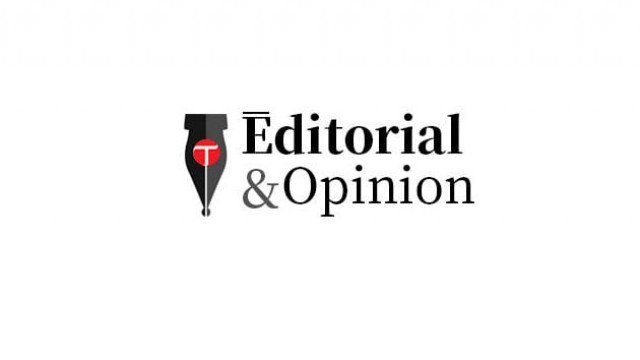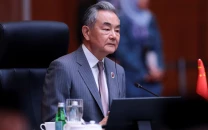A deficit-laden budget
The new GDP target seems to be a mirage as the Economic Survey says that the economy has grown by a mere 0.3%

It is one of the most incomprehensive and puzzling budget documents to be unveiled on the floor of the National Assembly. Having missed all of the economic targets in the outgoing fiscal year, and the economy reeling under a whopping 38% inflation and a battered rupee, the coalition government tried its best to pull out a rabbit from its hat. The budget for FY24 has an outlay of Rs14.46 trillion, and growth has been estimated at 3.5%. The new GDP target seems to be a mirage as the Economic Survey says that the economy has grown by a mere decimal of 0.3%.
The federal budget with over Rs6 trillion deficit, however, has surprisingly come with no new taxes in a brazen attempt to woo the hard-pressed populace. Nonetheless, a 10% tax has been proposed on listed and unlisted companies issuing bonus shares. The only solace is the 30-35% salary raise for government employees, along with a new upward slab of Rs32,000 per month as minimum wages, and a 17.5% increase in pensions. Likewise, the government has proportioned a trivial 2.6% of GDP, amounting to Rs2,709 billion, for public sector development projects both in the federal and provincial horizons.
With defence and debt-servicing eating away Rs1,804 billion and Rs7,303 billion, respectively, there is hardly anything left in the kitty for development. The surge in the value of the dollar, now being traded for Rs315 in the open market, has skyrocketed interest repayment by 85%, accounting for around 55% of the total current expenditure. Thus, nothing is left to manoeuvre on the social sector and running of the government, making it a constant to depend on the magnanimity of the IMF to help complete the $6.5 billion EEF programme by unlocking at least a billion dollars to help it navigate through the crest and trough of the economy.
The current expenditure is budgeted at Rs13,320 billion, 53% higher than last year, which could only be met if revenue collection exceeds well beyond Rs9.2 trillion. But that does not seem to be the case as the tax generation machinery is rotten and corrupt to the core, and has missed its targets. Likewise, with remittances coming down by 12%, mostly owing to pestering instability, and forex reserves dwindling at $4 billion, the road ahead is quite rocky. This pitches the economy at the risk of default on sovereign debt, and a deficit-laden budget makes the proposition more horrible.
The prime focus of the government in the budget was exhibited in the agriculture sector, where it has earmarked loans up to Rs2.25 trillion. The agri and services sectors have struggled with an upward trend of 1.5% and 0.86%, respectively; whereas the industry has contracted by 3%.
A budget that will sail smoothly in the absence of any opposition, the first of its kind in Pakistan’s parliamentary history, has promised no increase in duties on import of essential items. But an increase in withholding tax rate from 1-5% on payment to non-residents through debit/credit or prepaid cards, as well as a 5% tax on services provided in the hospitality industry has left many baffled. It seems the government wants to discourage plastic money transactions, and enable cash inflows in the market. Similarly, for a forex-starved country withdrawal of fixed duties and taxes on the import of old and used vehicles of Asian Makes above 1300cc is devoid of logic.
Published in The Express Tribune, June 10th, 2023.
Like Opinion & Editorial on Facebook, follow @ETOpEd on Twitter to receive all updates on all our daily pieces.















COMMENTS
Comments are moderated and generally will be posted if they are on-topic and not abusive.
For more information, please see our Comments FAQ